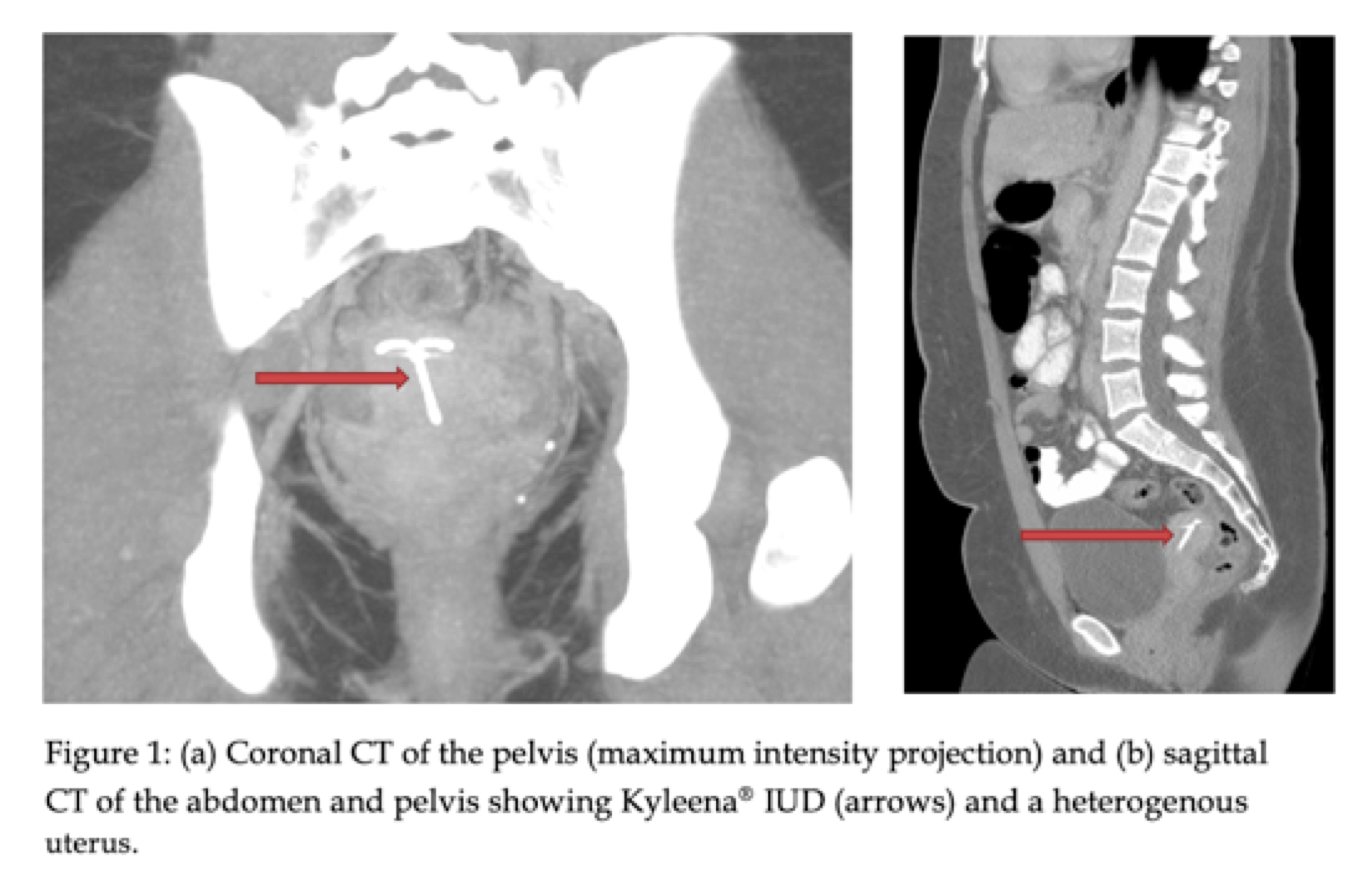Case Presentation: A 21-year-old female with a history of Type 1 Diabetes presented with a one day history of lower abdominal pain. The pain was most pronounced in bilateral lower quadrants and suprapubic regions. She had a Kyleena® intrauterine device (IUD) placed for dysmenorrhea, five months prior to presentation. She denied any sexual activity following its placement and was up-to-date on her vaccinations. On arrival, her heart rate was 138 with blood pressure 94/61. On exam, she was diaphoretic with tenderness around the fundus extending into the lower abdomen. She was guarding, but without rebound. Labs were notable for a WBC of 20 k/uL and glucose 300 md/dL. Her UA was unremarkable and Gonorrhea and Chlamydia test was negative. Abdominal CT showed the presence of an IUD with a small amount of free fluid in the abdomen. Blood cultures returned positive for gram negative cocci with subsequent speciation of Haemophilus influenzae. Her IUD was removed and the patient was treated with seven days of Ceftriaxone and fourteen days of Doxycycline.
Discussion: Gonorrhea or Chlamydia infections are rarely associated with IUD placement. During clinical trials for Kyleena®, PID was observed in only 0.5% of women, with most cases occurring in the first year following IUD placement. Following the routine vaccination of H. influenzae type B (Hib), the incidence of invasive Hib has markedly declined, although there is no protection to nontypeable H. influenzae (NTHi). Rarely, the urogenital tract can be colonized by NTHi and has been associated with the development of PID. In these cases, it is almost universally associated with the placement of an IUD, especially when complicated by bacteremia. In this case, the placement of an IUD led to the development of PID, and subsequent NTHi bacteremia. Future IUD use is contraindicated in patients with a history of PID and alternative contraception methods should be recommended.
Conclusions: With the rising popularity of IUD use, hospitalists need to understand its potential complications. When H. influenzae bacteremia is found in the setting of an intrauterine device (IUD), it should prompt investigation into the IUD as a potential source of infection.

